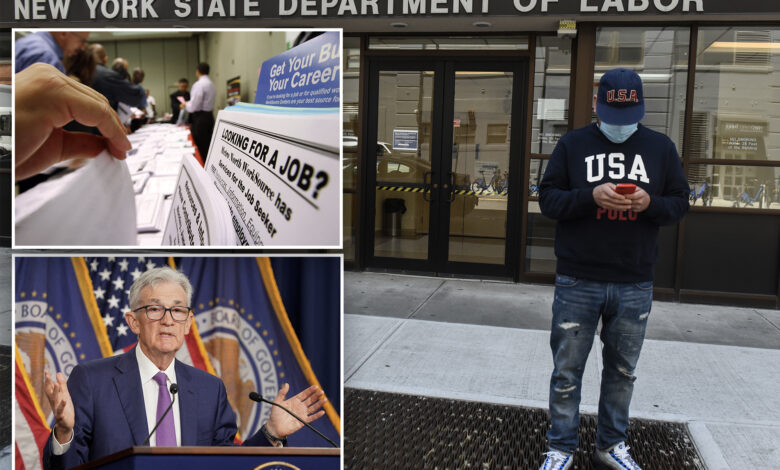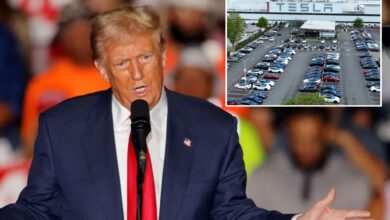US job growth slowed to 175K jobs in April

US employers increased their payrolls by 175,000 in April — a notable slowdown from the average 276,000 new jobs per month created so far this year.
Last month’s pace of hiring marked a change of tune from a recent trend in the labor market, where resilience has bolstered the Federal Reserve’s case that interest rates aren’t quite ready to be slashed.
April’s job growth figure fell short of the 240,000 roles analysts were predicting — suggesting the possibility that the economy could be headed towards a slowdown worthy of an interest rate cut.
The closely watched jobs report also showed that the unemployment ticked higher to 3.9%, up from the month-ago rate of 3.8%.
The Dow Jones consensus had anticipated unemployment to remain unchanged.
April was the 27th straight month that the unemployment rate held below 4%.
March’s impressive 303,000 gains were shockingly revised up by 12,000 to a total of 315,000, and the Labor Department slightly revised February’s 270,000 additional roles down by 34,000, to 236,000, on Friday.
April’s jobs report showed strength in hiring primarily across the healthcare, social assistance and transportation industries.
Employment in retail also continued to trend upwards, while jobs across construction and government didn’t experience any notable increases, according to the Bureau of Labor Statistics.
The endurance of the labor market in recent months has been one of the most prominent signs that inflation will stay higher for longer.
Historically, a strong job market keeps wages and consumer spending levels elevated, thus fanning inflation and interest rates.
The latest economic data muddies the path forward for Federal Reserve Chair Jerome Powell, who said on April 16 that “given the strength of the labor market and progress on inflation so far, it’s appropriate to allow restrictive policy further time to work and let the data and the evolving outlook guide us.”
The rate-setting Federal Open Market Committee chose to keep the benchmark federal-funds rate steady — at the highest range the US economy has seen in over two decades — when its latest two-day meeting concluded on Thursday.
In an afternoon press conference, Powell downplayed the possibility of further rate hikes as recent economic data has yet build central bankers’ confidence they seek in falling inflation.
On Monday, for example, the World Bank warned that the days of energy and other commodities serving as a deflationary force could be nearing an end, citing geopolitical tensions that have put pressure on demands for oil, industrial metals and other supplies.
Just one day later, the Labor Department said the employment cost index (ECI) — which measures worker compensation and benefits — gained just 1.2% in the first three months of this year.
The reading, which traditionally signals underlying inflation pressures, was also above the 0.9% rise experienced in the fourth quarter of 2023.
The latest warning signs throw further doubt on the Fed’s ability to tamp inflation down to its 2% goal by the end of the year.
To bring inflation down from its 9.1% peak in the summer of 2022, central bankers issued a string of 11 rate hikes in an effort to cool down the economy, lifting borrowing rates to their current 23-year high, between 5.25% and 5.5%.
April’s CPI is slated to be released on May 15.
When inflation persists as it has, the Fed has historically hiked interest rates even further.




